Architects: Showcase your next project through Architizer and sign up for our inspirational newsletter.
Architecture and design firms are often the catalysts for change in hospitality. In an industry that yearns for innovation and is always seeking distinction in an overcrowded marketplace, the creative minds of architects and designers strive to construct unique and inspiring environments. New projects introduce change and develop new ways for people to travel, work and live. In this day and age, nothing has had a more significant impact on the global hospitality industry than the COVID-19 pandemic.
Over the last couple of years, the hospitality industry has faced devastating uncertainty and astronomical global change. Many businesses, sadly, have not survived. Stay-at-home orders, lack of tourism and economic shutdown resulted in numerous closures and thousands of lost jobs. Fortunately, creative minds and innovative ideas have kept many businesses afloat despite dire circumstances.
Now that the world has begun to reopen, consumers will recognize the profound changes that have taken place. We now live in a world where remote working is the norm and not the exception and where people are more cautious and conscious of travel. Likewise, individuals are far more spatially aware, and health and wellbeing are at the forefront of our minds and choices. These considerable shifts are shaping the world as we know it and, in particular, the hospitality industry. Alongside it, hospitality design will also be reshaped.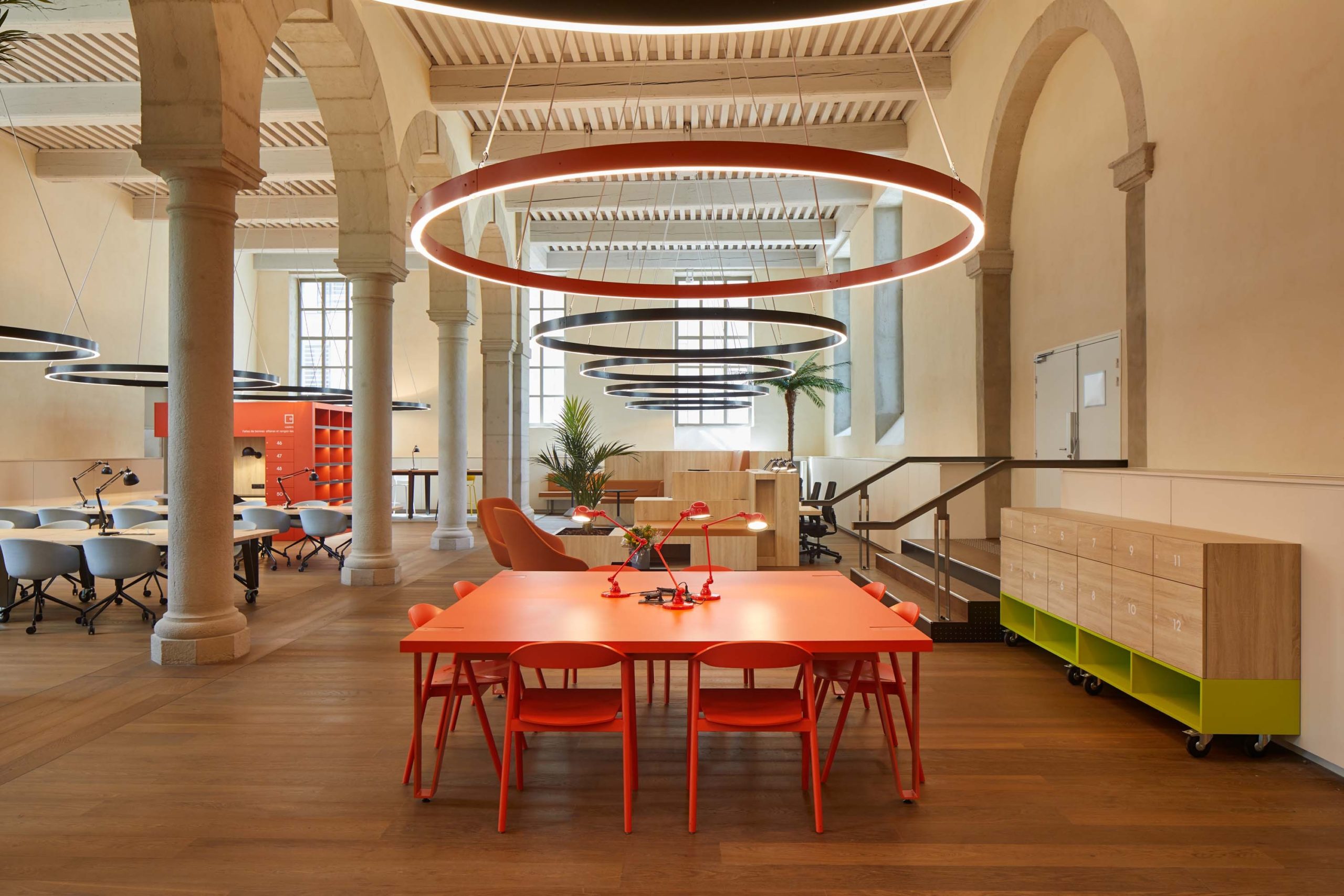
 WOJO concept by Accor and YAD.SPACE at Hôtel-Dieu de Lyon, Lyon, France
WOJO concept by Accor and YAD.SPACE at Hôtel-Dieu de Lyon, Lyon, France
Design-led Coworking and the Hospitality Industry
The working dynamic of most businesses has shifted dramatically since the beginning of the pandemic. When possible, many companies supported their staff by allowing for a “work from home” setup. Many firms have seen an increase in productivity and improved wellbeing of staff in implementing this new working model. A recent Gartner CFO survey reveals that nearly three-quarters (74%) of businesses plan to permanently shift employees to some form of remote/hybrid work after the Covid-19 crisis ends. Estimates forecast that by 2025, 70% of the workforce will be working remotely at least five days each month.
It is crucial to remember that “working from home” does not necessarily mean physically “working from home.” In essence, the term now refers to the freedom to conduct tasks and business wherever is productive and inspiring without the ties of a traditional office environment. This freedom to choose and change workspace daily presents an opportunity to the hospitality industry and its designers.
The rise in coworking spaces emerged well before the pandemic began; various design models were already in place that optimized multi-purpose workspaces. Hospitality venues, which have always supported business needs by providing well-designed, well-connected meeting and conference spaces, were at the forefront by delivering public areas designed to strengthen coworking. Currently, the hospitality industry has evolved, providing design-led coworking locations and offering adaptable guest room spaces that can be used as individual office environments. The flexible rooms maximize the return on otherwise redundant space, provide the privacy of a traditional office and, in turn, present a host of new and exciting challenges for architects and designers.
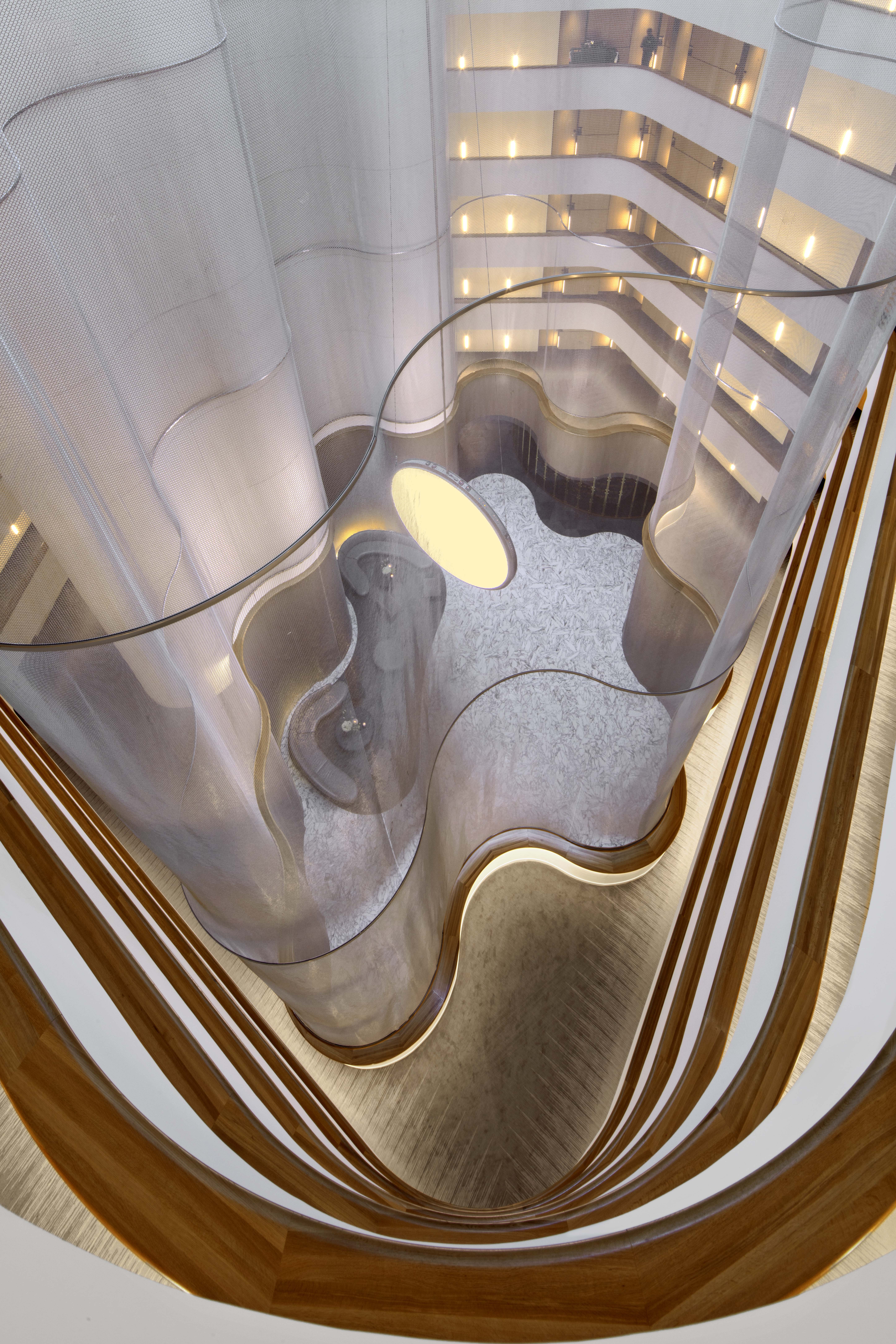

Conrad Washington DC by Rottet Studio with Herzog & de Meuron, Washington, DC, United States
Hotels as Active Neighborhood Participants
The mass reduction in global travel has brought about a considerable change to the marketing strategy of many hotel operators. While international travel nearly ceased due to border closures and travel restrictions, in some parts of the world, local communities remained open and accessible. Hotel operators acquiesced and shifted their focus to their local surroundings, adapting to a new customer base and strengthening their struggling neighborhoods and allowing them to thrive.
The idea of hotels being active neighborhood participants is not a new one, with many hospitality locations being icons of their communities. Hotel lobbies are increasingly being transformed into places that attract and welcome guests and local people alike. The benefits of 24-hour hospitality services and facilities can give hotels an edge over traditional establishments, such as cafes and bars. What is more, the avant-garde design aspirations of hotels provide an exciting and inspiring backdrop to everyday life from the minds of some of the world’s foremost architecture and design talents. The new constructions that we are beginning to see are hotels conceived considering the local area from the outset. They embrace their locality and showcase the heritage of their neighborhood, becoming spaces that celebrate their surroundings.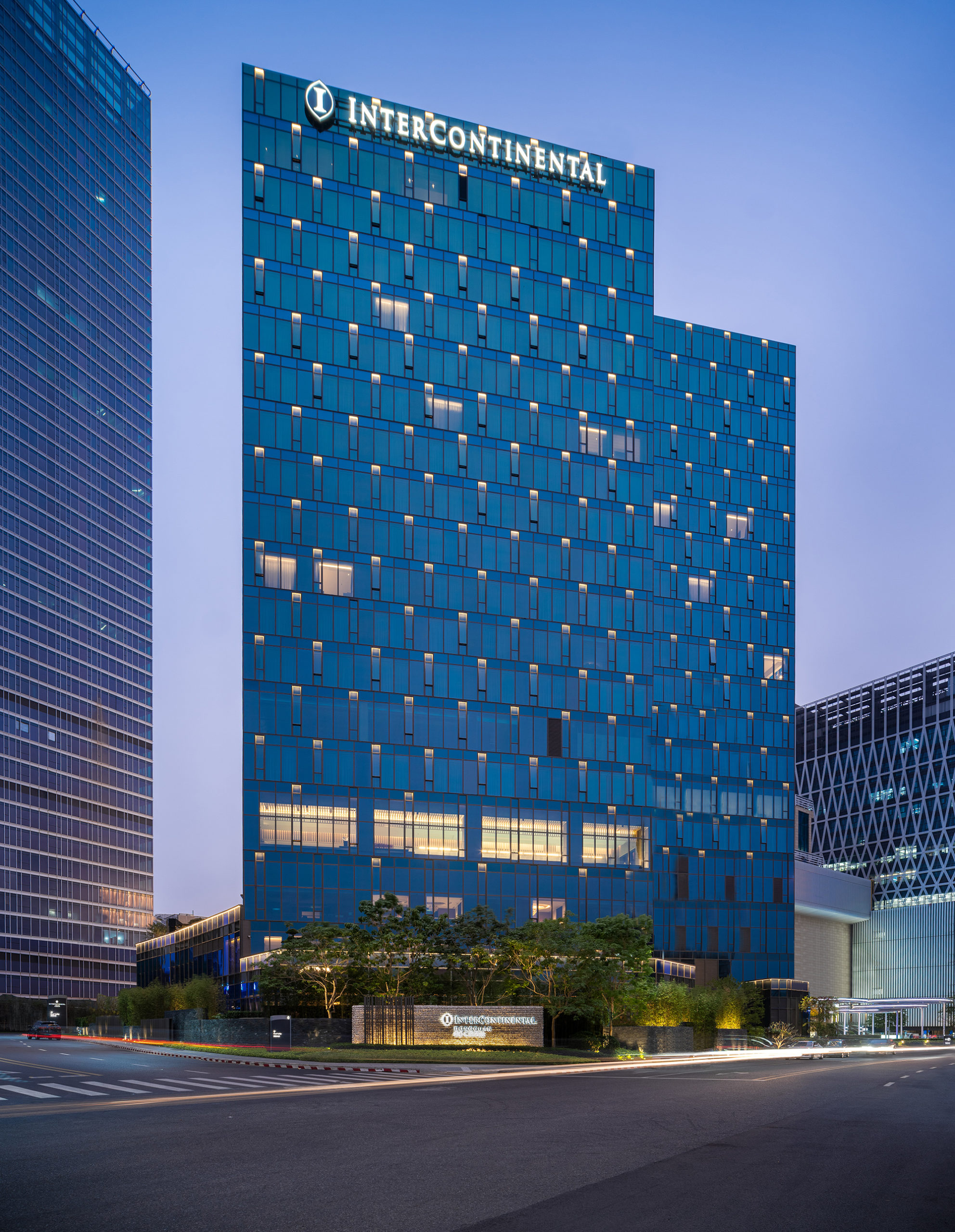
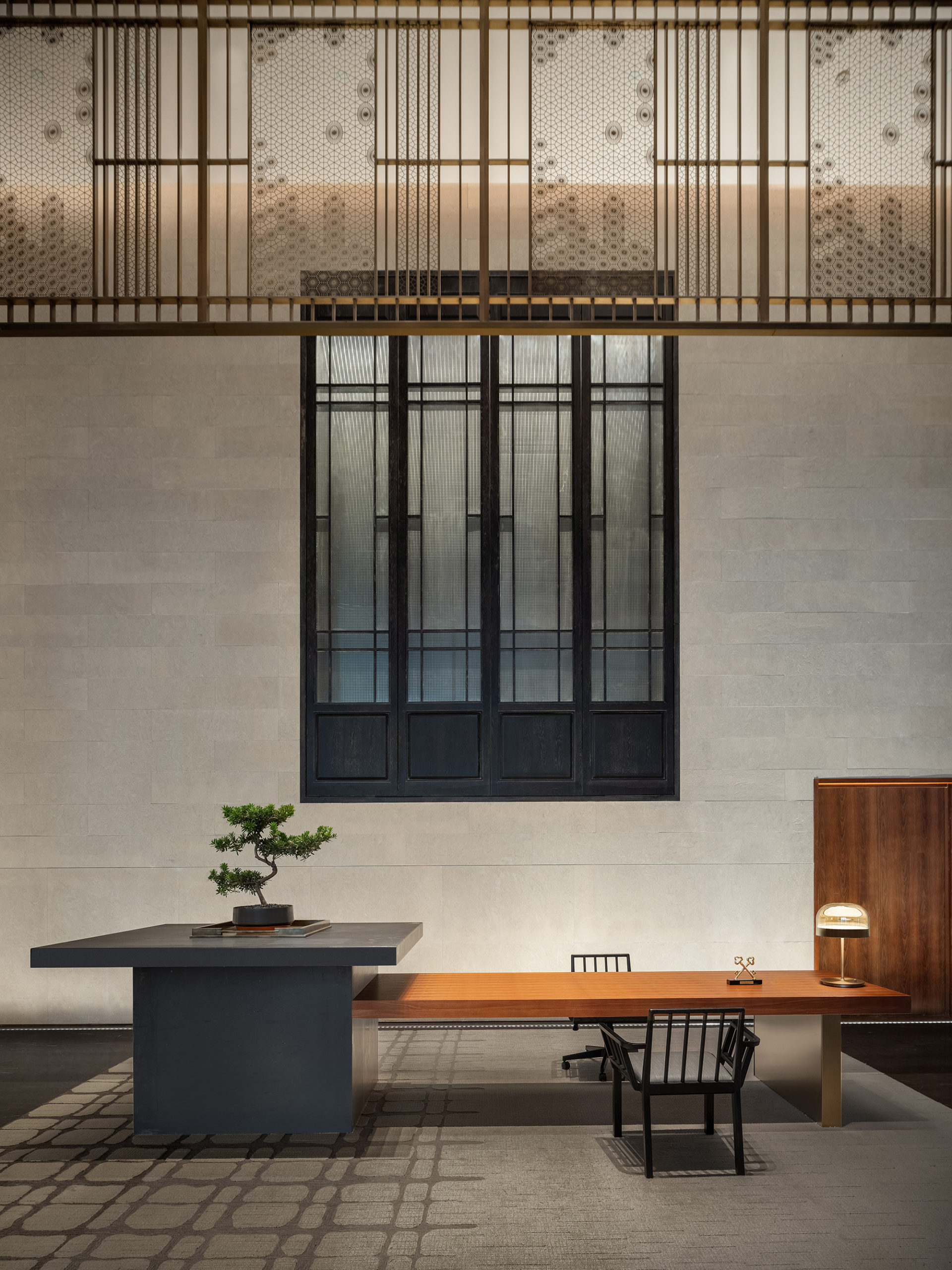
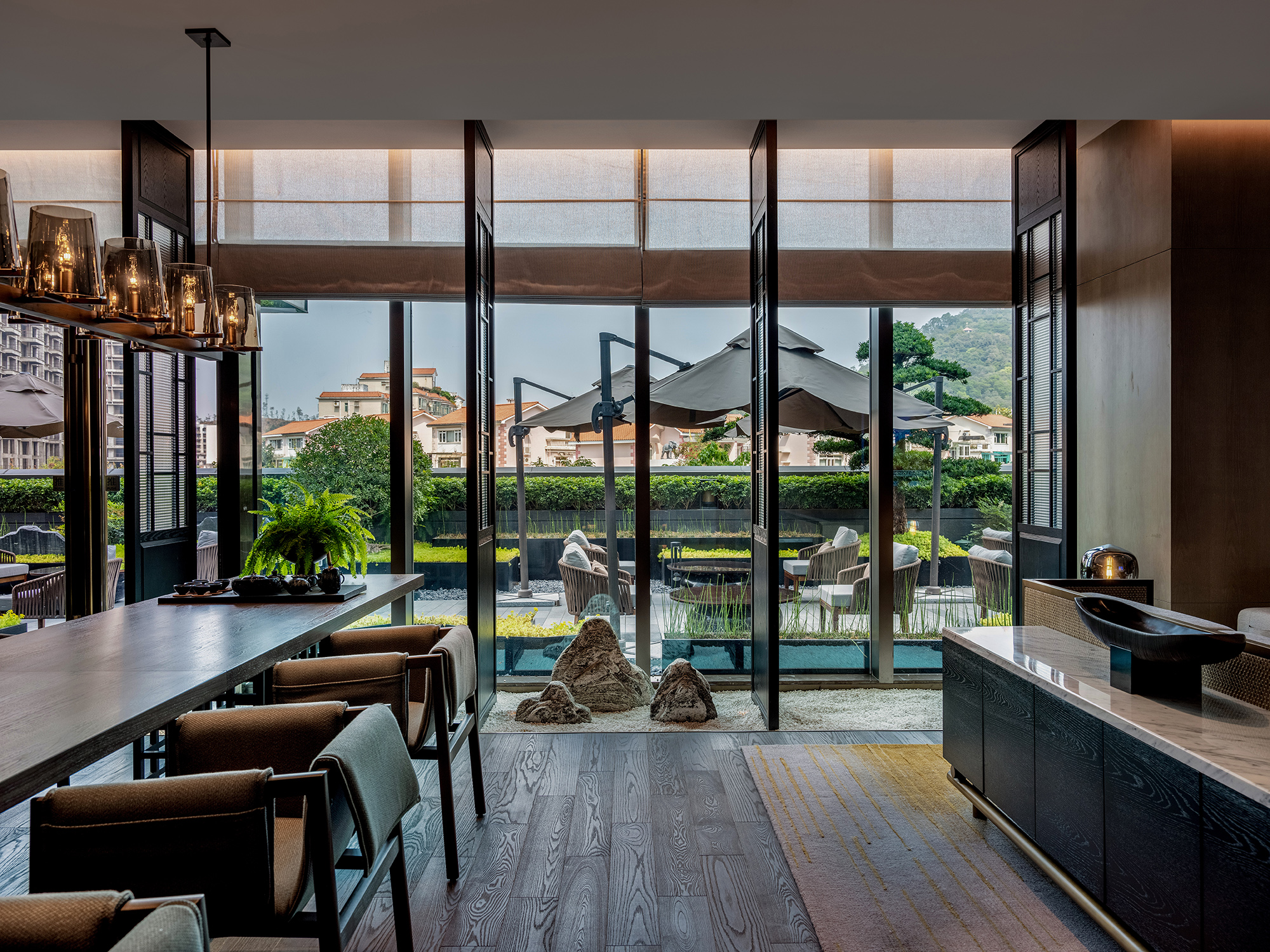
Intercontinental Dongguan by CCD, Guangdong Province, China
Touchless Technology and Contactless Guest Engagement
The pandemic has changed how we interact. Our daily lives are consumed with space and distance; however, in towns and cities where space is already premium, many architects and designers have turned to technology and automation to support and implement changes to our environment. Touchless technology has increased in popularity considerably over recent months with the application of contactless transactions for payment, transport, or activation all around us. The need to reconsider how guests can interact with amenities has altered the traditional hospitality process and, in turn, hospitality design.
A need to reduce social interaction and interfacing has led to an increase in check-in automation and, in doing so, setting about the redundancy of the traditional reception desk. Contactless engagement eases the flow and capacity of spaces, be it at check-in, circulation spaces, or public areas. By embracing automation and allowing the guest to take on these roles, unequivocally necessary features, like the check-in desk, can be removed from prime focus, placing social hospitality spaces at the forefront of the arrival experience.
Most plainly, it’s clear that after over a year of adversities for the hotel and hospitality industry, change is welcomed. Architects and designers are embracing the challenges, not only to try and establish a safer world but to support communities, celebrate heritage and realize technological innovation. All with the principal goal of sustaining the newly ignited appreciation for experiences felt by locals and travelers everywhere.
Architects: Showcase your next project through Architizer and sign up for our inspirational newsletter.





 Conrad Washington DC
Conrad Washington DC 


